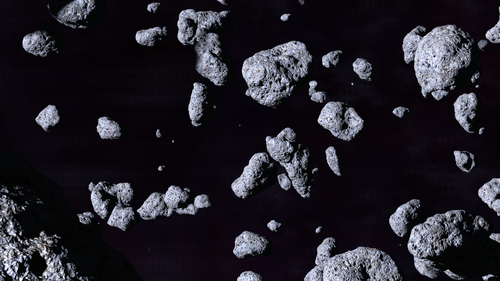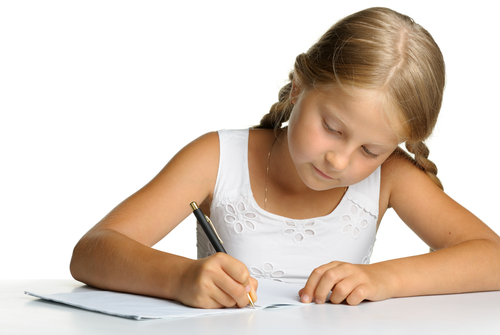This is a diagram of our Solar System. It is a group of planets that orbit the Sun.
The Sun is a star and the planets orbit due to its gravity.

Now, this diagram is not to scale, as the Sun is much bigger than the planets.
In fact, the Sun is over 100 times wider than Earth and 10 times wider than Jupiter, the biggest planet in the Solar System! That means that the Sun could swallow all the planets in the Solar System with room to spare!
The distances between the Sun and the planets is also much greater than the diagram suggests - it's just that it's often illustrated like this, simply to get it to all fit onto one page!
Did you know that there are eight planets in the Solar System?
It's important to remember them in the correct order of their distance from the Sun: Mercury, Venus, Earth, Mars, Jupiter, Saturn, Uranus, Neptune. Why not make up your own mnemonic (pronounced new-mon-ick) to help you remember that order?

Pluto used to be considered a planet, but scientists have changed their mind in recent years and now consider it to be a dwarf planet, along with Ceres and Eris.
Of course, the further a planet is from the Sun the longer it takes to orbit it.
Asteroids

Between Mars and Jupiter there is an asteroid belt.
The picture above shows what it feels like to be in a moving asteroid belt! It's made of millions of small lumps of rock.
Some asteroids cross the orbit of the Earth and, if a huge asteroid collides with the Earth, it can cause a catastrophe!

It's believed that the dinosaurs became extinct when a huge asteroid hit the Earth 65 million years ago - did you know that?
Comets are also part of the Solar System. They are balls of dirty ice.
Like planets, comets orbit the Sun, but the shape of their orbit is very different.
They don't have the Sun at the centre of their orbit and so will not be visible from Earth for very long periods.
Some of the ice on a comet melts as it gets closer to the Sun, and it loses little pieces of gas and dust, leaving a 'tail'.

Some planets have their own natural satellites called moons.
It's the force of gravity that keeps the satellite in orbit around a planet, just as it's gravity that keeps planets in orbit around the Sun.
.jpg)
The moon is Earth's natural satellite.
Planets don't give out light, but we can see them because they reflect light from the Sun.
They look bright because they are much closer to the Earth than the stars.
The only planet known to have living organisms on it is Earth. The other planets are too hot or too cold.
OK, so that was a lot to take in - want to just go through it again before you tackle the activity?
Remember, you can come back to this page any time by clicking the red button on the right-hand side of each page.








